|
|
Expedition
Expedition | People
|
Log - July-27-2003
by Gerhard Behrens and Robert McCarthy
Previous | Next
| Samples are not so simple! |
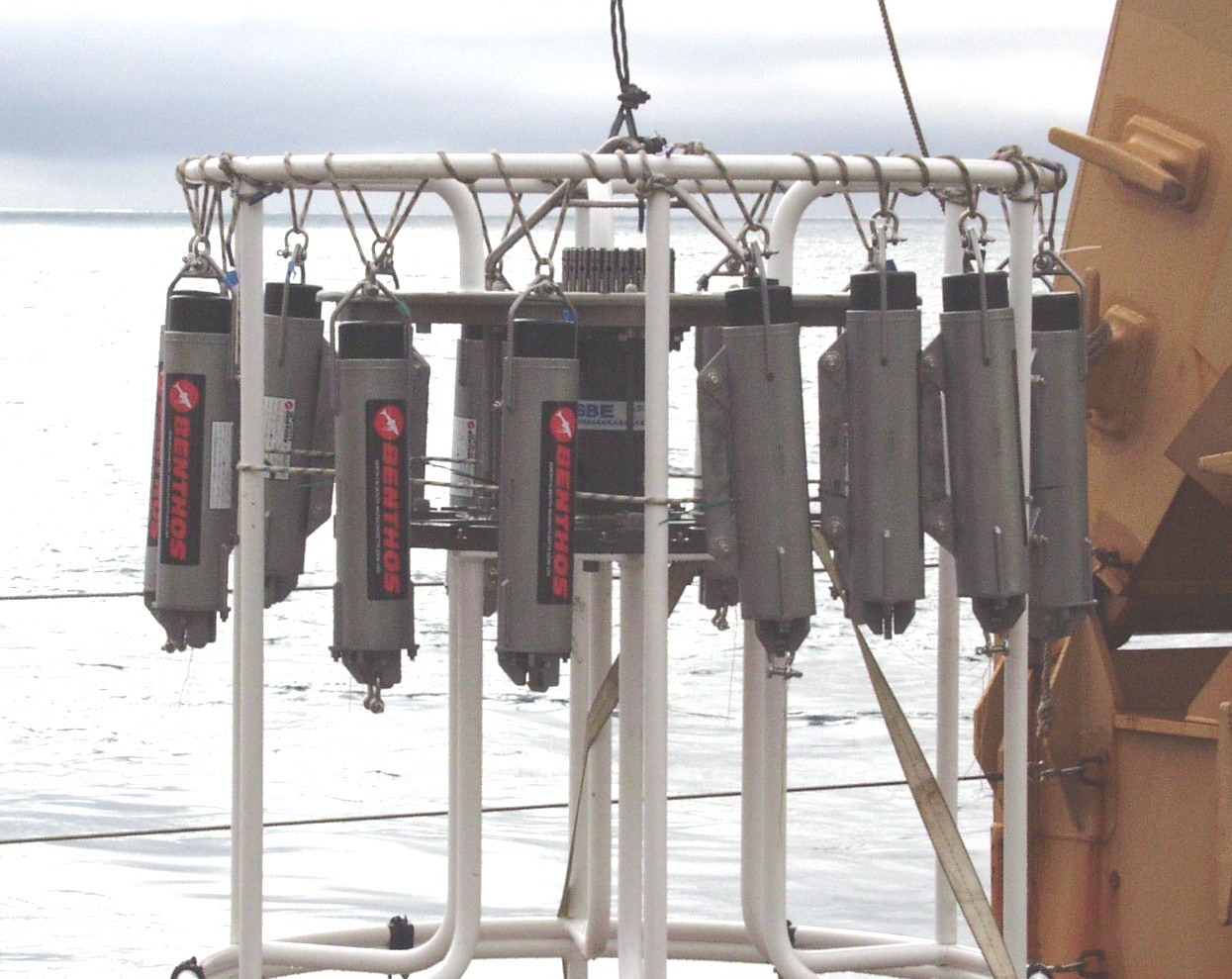
Fig 1: Acoustic releases ready for testing on the rosette. |
I was talking with Dave Huntley this morning, about the instrumentation that will be thrown overboard in the hopes of recovery in 2 to 3 years. However, it is not as haphazard as that might sound (sound being the operative word here). The ships position is precisely known, and the instruments are held firmly to the ocean bottom with very large weights. The instruments are then tethered to this weight by mooring lines, which are kept taught by subsurface floats. This is so ships donÕt run into them or get dragged or knocked around by icebergs. So the question is, how do they hope to recover them? Well, they purchased acoustic releases that will be attached to the large weight on the bottom. One release costs about $14,000 dollars, and they bought 36 of them. But thatÕs not all. They also had to buy a deck box that will trigger the release mechanism, and thatÕs another $10,000. So why pay so much? To make sure you get back all 26 of the bottom mounted Acoustic Doppler Current Profilers (ADCP), which costs $60,000 each and that records all of the current data that your research is hinged upon. These costs are just a part of the proposed study (acquiring ship time, crew, scientists, and other equipment related to the piston coring operation and water testing), so you can see how much money is being spent on this research. |
| The engineers at the factory must thoroughly test their designs. The deep releases are tested down to 2000 meters, which is about 200 atmospheres of pressure. The housing must be able to withstand that much pressure without leaking, plus the mechanism to open the release has to function at that pressure too. Also, the materials have to be corrosion resistant, so that the moving mechanisms donÕt corrode and release before requested. They contain alkaline batteries that are designed for about 2 years of life in warm water. These were adapted to sample intermittingly to extend the battery life to about 3 years in this environment. The signal to trigger release can be sent from as far away as 5 km. So if the water depth is 2 km, conceivably the ship could be 4.6 km away from the unit. (The 5 km being the hypotenuse of the right triangle with sides 2 km and 4.6 km.) The releases weigh about 44 lbs in air, and about 28 lbs in seawater. Thus the buoyant force is roughly 16 lbs. (Archimedes principle again.) |
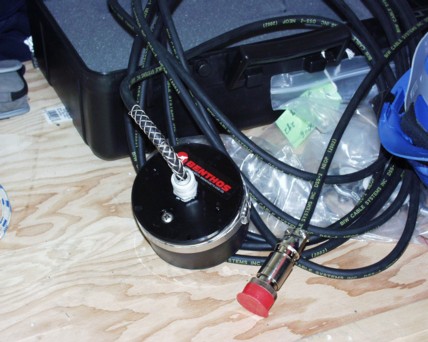
Fig 2: The transducer, which is lowered into the water and sends the signal down to the release to trigger. This device also receives the return signal from the release. |
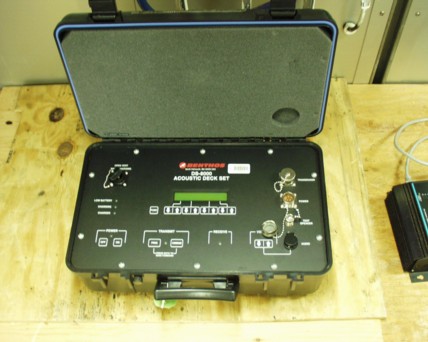
Fig 3: The deck box, which connects to the transducer, allows the desired frequency to be transmitted. |
Before they just through them overboard, they must first test them to see if they are working correctly. While we are in Baffin Bay taking CTD casts to sample the water, the mooring crew is busily designing ways to test the releases. They have attached the releases to a rosette (See fig 1), and tried to trigger them from the ship. This is a vertical test, because the release is directly below the ship on the rosette, and the transducer (the microphone/speaker) is also directly below the ship. Upon testing the releases this way, two were found to fail. Finding this out now was extremely important, since they realized that the transducer was probably too shallow and that they were experiencing a multipath interference problem. The signal to release was arriving just ahead of the same signal that reflected off the underside of the shipÕs hull and essentially told the release signal to be ignored. So by lowering the transducer 7 or more meters, they hope to solve that problem. |
| Also, Dave Huntley wants to test the range of the signal in a horizontal direction. This will be done by lowering the releases on the rosette again, but this time Dave will take the deck box with him on a small boat. Thus heÕll send the trigger sound from a horizontal distance, and when they pull up the rosette, theyÕll be able to see which ones triggered. These trouble-shooting procedures are extremely beneficial, since youÕre always thinking of how things can go wrong and how you can do your best to assure success. The transducer (See fig 2) sends an acoustic signal (sound) at a frequency of between 9 and 13 Hz, in _ Hz increments excluding 12 Hz. A hertz (Hz) is a cycle per second, and the 12 Hz band is reserved for the return signal to the deck box (See fig 3). So the deck box sends a signal, say 9 Hz, to the release, and after the release lets go of the anchor, it sends the 12 Hz signal back to the deck box signifying that it received the original signal and done its job. Since these are sound signals (pings) they travel at the speed of sound in seawater. This is about 1500 m/s, which is over 4 times the speed of sound in air. The speed of sound is greater in seawater than in air, since the particle-to-particle collision that transfers the energy happens faster in the denser medium. So the time it takes for the signal to hit the release, register and open, send the return signal, and finally hear the confirmation signal is only about 3 seconds. If you donÕt hear the return confirmation signal, you try again, and again, and again. If it doesnÕt release, theyÕll have to grapple for them, in which they lower a large grappling hook to the bottom, and have the ship track a circle around the mooring location, and as the ship steams away, you hope you catch it. However, this procedure is very time consuming, and you might damage the instruments. So on the very deep casts, the scientists designed a double acoustic release (See fig 4), whereby if one fails, the other might save the day. Again, thatÕs another $14,000 but their design allows for recovery of both releases which can be reused on a later cruise. Better safe than sorry. All I can say is keep your fingers crossed! |
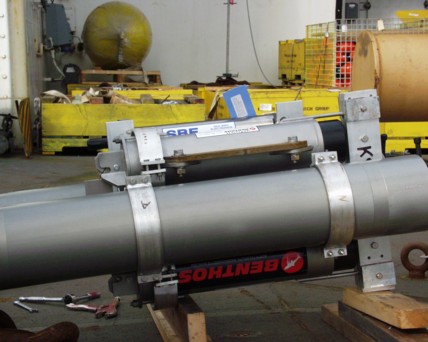
Fig 4: The mooring starting to take shape. The left side of this picture will connect to the bottom weight. Notice the release on top and on the underside, just in case. |
| We are about 73 degrees north, getting close to a very small town called Pond Inlet, in Baffin Bay. There is no nighttime now, which is a good thing because collecting water samples is a 24-hour a day job, and no one wants to be reminded by darkness, that it is 3:00 in the morning.
|
| We get to a station (did you learn your words in the fun facts section?) and cast the rosette (that is another word you should look up in the fun facts). As it drops down, the chief scientists watch a computer picture and look for interesting things about the waterÕs temperature, salt, and oxygen levels. On the way back up, they collect water at these places by clicking the computer mouse. When the water samples are back on the ship, itÕs time for others to collect what they need for their experiments (remember yesterdayÕs picture of Ōmilking.Ķ). Then the ship steams off to the next station and the crew gets the rosette ready for another cast. That pattern is repeated over and over again in different parts of Baffin Bay. By the end of Sunday, the team will collect water 12 different times. We are on a very strict schedule, so you cannot call Ōtime outĶ and take a rest. It is a rare chance to get these water samples, so sleep can wait. Working together, the team must keep going. Some people have been awake and working for more than 24 hours. Others have only had a few hours sleep in the last 3 days. That takes a lot of perseverance and patience! |
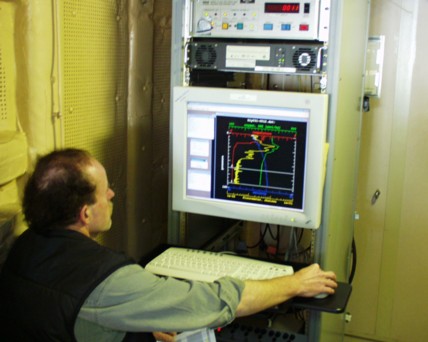
Co chief scientist Humfrey Melling clicks the mouse to get a water sample at just the right spot. |
| Collecting a water sample for testing is not like going to the kitchen sink and filling a bottle. There are very clear rules on how seawater must be collected. John Harris is testing for a chemical called freon, so he must go first. He must also collect his samples with a big needle so no outside air gets into his water sample. Then he has to put his sample in a water bath so the temperature stays even. Dale Hubbard is testing for oxygen. He has to tip his sample bottle upside down and flush it out so that none of the roomÕs oxygen is in the bottle. Then he fills it to overflowing, and lets it overflow for about 15 seconds. While it is overflowing, he taps it to make sure no air bubbles are inside. Finally, he can cap his bottle. Everyone who collects samples must rinse the sample bottle 3 times. Then, you have to report your sample to a person who checks off that you took a sample from a certain bottle. Chi Meredith is our Ōsample copĶ making sure water is taken in the right order, from the right place. |
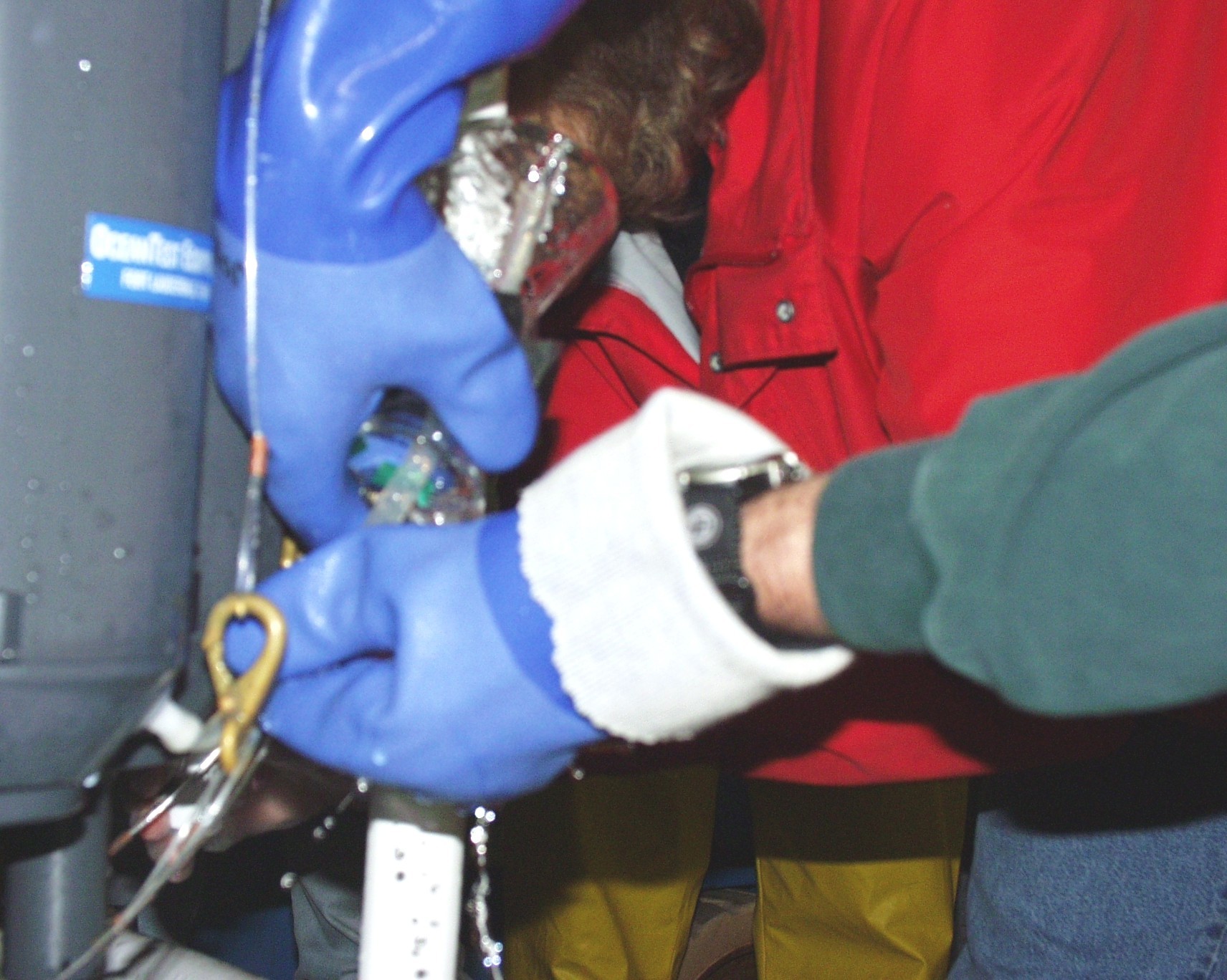
Joe Jennings rinses out his bottle before filling it with seawater sample. |
As I mentioned before, some testing is done right away on the ship. Joe Jennings is testing for nutrients, the things plants and animals need to live. He has to do tests right on the ship because waiting until we get home will change the water sample too much. Dale, who is measuring for oxygen, must ŌpickleĶ the oxygen right away. He adds a chemical to his water sample, and this chemical takes all the oxygen out of the water and holds it in a kind of slime at the bottom of his flask. A little later, he can measure the amount of oxygen in this sludge to know how much oxygen there was in the water. |
| Some testing will be done on shore back home. For Kumiko Azetsu-Scott who is testing inorganic (non-living) carbon, this means she has to pack her water samples for later. She has to follow very special rules for packing: rinsing her bottle, collecting it carefully, creating some air space, adding a poison to kill any living things, adding 4 strips of a sealer to the bottle top, then locking the top with a special rubber band. She is following a worldwide protocol, which means these are rules that every scientist in the world must follow for this testing. It takes integrity (doing the right thing) to follow the rules and not take short cuts. And, as Kumiko said, you must be in good shape to handle the long hours. |
| I was able to help with taking water out of the rosette. It felt good to be part of a team. I also felt honored to be touching water that had been cruising the ocean floor over a mile below us, so close to the North Pole. When was the last time this water had been in contact with air on the surface? When was the last time that water was a raindrop? |
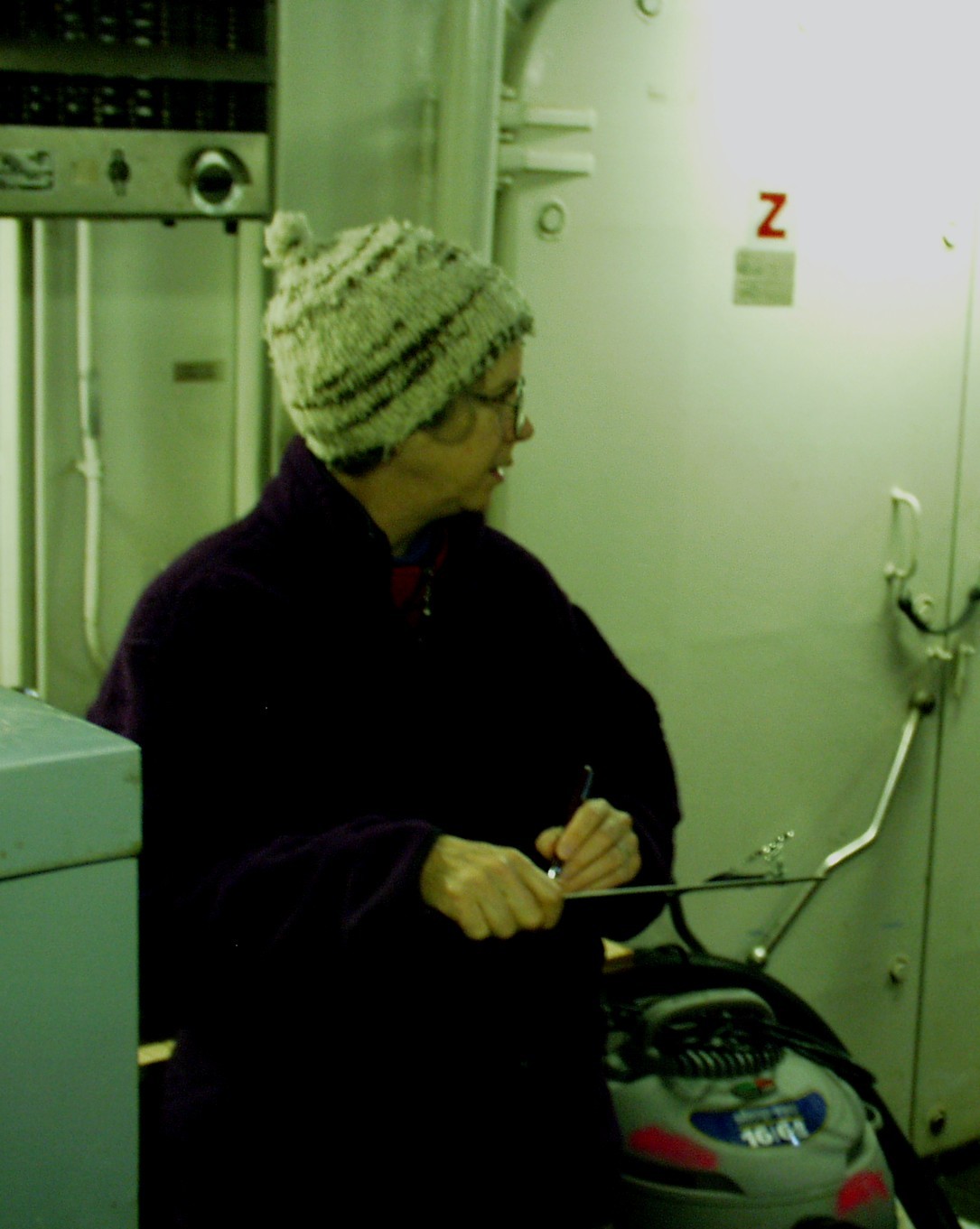
Chi Meredith, the sample cop, records each personÕs sample. |
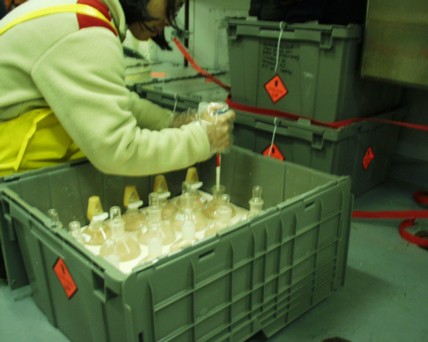
Kumiko Azetsu-Scott adds poison to her sample. Notice the rubber band locks on the bottle top. |
Finally, I thought about how precious this water is to science and to our earth. It takes a lot of money, a lot of people, a lot of equipment, and a lot of knowledge to get samples from this far-away body of water. I looked at the water everyone was taking, hoping that the clues inside would help us understand our oceans better, and help us take better care of our planet. |
|
